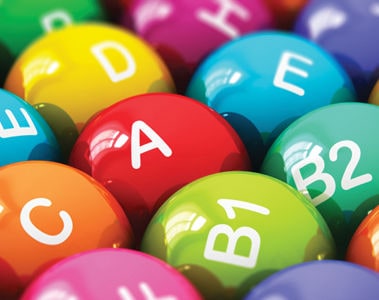
-
North America/EN
- Global
- North America
- Latin America
Vitamin E, recognized for its antioxidant properties, plays a significant role in meat products' color stability and shelf life. This article explores the impact of Vitamin E on the color case-life of meat, a crucial factor in marketability and consumer perception.
The color of beef is a pivotal quality attribute that significantly influences consumer purchasing decisions (Brewer et al., 2009). Fresh meat typically presents a bright, cherry-red appearance (Hood and Riordan, 1973) resulting from myoglobin's oxygenation, a muscle pigment. However, this red color can deteriorate over time due to oxidation processes, transitioning to an unappealing brown. This discoloration is primarily driven by the conversion of oxymyoglobin to metmyoglobin (Wood et al., 1997; Velasco et al., 2011; Suman and Joseph, 2013), signaling a loss of freshness and potentially leading to decreased consumer acceptance and economic losses for retailers.
Vitamin E in the α-Tocopherol form is well-documented for its antioxidant effects in biological systems, which include protecting cell membranes from oxidative damage and stabilizing unsaturated fats within the muscle tissue (Gatellier et al., 2005; Hoa et al., 2020). Vitamin E significantly extends the case-life of beef by delaying the oxidation of myoglobin (Karami et al., 2010; Humada et al., 2014; Fruet et al., 2018), which helps maintain the meat's desirable red color for longer periods. Studies have shown that dietary supplementation with Vitamin E increases the concentration of α-Tocopherol in muscle tissue, further enhancing color stability and prolonging shelf-life. (Wood et al., 1997; Gatellier et al., 2005; He et al., 2010, Deters & Hansen, 2019).
The current recommended dose of vitamin E during feedlot receiving is 400 to 500 IU per animal daily (NASEM, 2016). Research has shown that administering vitamin E at doses of 400 IU or higher per animal daily enhances weight gain and reduces the incidence of bovine respiratory disease in feedlot cattle (Secrist et al., 1997), highlighting another benefit of supplementing it. Further studies have explored its effects on beef quality. For example, Kim et al. (2019) found that higher levels of dietary vitamin E might inhibit lipid oxidation and enhance the color stability of beef muscles by reducing the expression of oxidation-related proteins. Liu et al. (1995) suggest that feeding cattle 500 IU of Vitamin E per day for a period leading up to slaughter can result in noticeable improvements in the color stability of beef. Such supplementation benefits the aesthetic quality and enhances the meat's lipid stability, reducing the rate of rancidity and off-flavor development.
Color case-life refers to the period during which meat retains its retail display color before noticeable discoloration occurs. Enhancing color case-life through Vitamin E supplementation is a critical consideration for the meat industry, particularly in extending beef products' marketability.
Senaratne et al. (2009) demonstrated the significant impact of Vitamin E on beef quality. They found that Vitamin E supplementation significantly reduced lipid oxidation in beef cattle, particularly those fed with wet distiller grains—a diet known to speed up the rancidification process. This reduction in lipid oxidation is especially beneficial during retail display, particularly in tenderloin and strip loin steaks, where it helps preserve the meat's color and flavor, extending its shelf-life and enhancing its appeal in retail settings.
The extension of color case-life in beef has direct economic implications. By reducing the rate of discoloration, retailers can reduce markdowns and waste associated with unsaleable discolored meat. Williams et al. (1992) determined that extending the shelf-life of meat by just 1-2 days could potentially lead to annual savings of up to one billion dollars for the US meat industry. Additionally, the enhanced shelf-life provided by Vitamin E supplementation allows for greater flexibility in marketing and distribution, contributing to overall cost-efficiency.
Vitamin E is an essential dietary supplement that profoundly influences color case-life, feedlot performance, and overall beef quality. Mitigating oxidation processes that lead to meat discoloration enhances beef products' shelf-life and consumer appeal and improves feedlot operations' economic outcomes. As consumer expectations shift towards high-quality, visually appealing meat, the strategic inclusion of antioxidants like Vitamin E in cattle diets becomes increasingly crucial. This practice meets market demands and is pivotal in the evolving meat industry, optimizing animal health and producers' profitability.
17 June 2024
We detected that you are visitng this page from United States. Therefore we are redirecting you to the localized version.